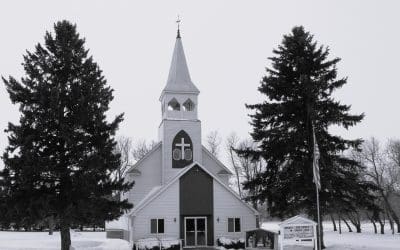Written by Pastor Jason Gudim
Why is an Intentional Formation Strategy Important in a Congregation? (Part 1)
“Repetition, repetition, repetition.”
This is an old adage that has been applied by teachers to their students throughout the centuries. The idea is that to truly learn something, one must continue repeating it until it enters your bloodstream, gets chiseled into your brain, and etched onto your DNA.
While this might be conventional wisdom when it comes to teaching, for some reason it is often rejected when it comes to the Christian church. Christians love the new, the fresh, and the spontaneous. This may seem to be a recent development, but it something that the church has struggled with for 2,000 years. Paul warned his disciple Timothy about “itching ears” in 2 Tim. 4:3. People almost immediately mischaracterized the Reformation as an excuse to start something new rather than a re-connection with the historical church through the ages. And in today’s information-soaked society, content creators and innovators are far more exciting and “relevant” than local pastors who faithfully serve their congregations with the faith handed down to us by the apostles.
But a more critical eye and discerning spirit will soon discover that it’s the phrase “the faith” that should capture our attention. Scripture is chalk full of examples and references to the reality that there are boundaries to what we believe. As such, we must teach the faith in order to re-establish these boundaries from generation to generation.
This reality also informs us that our faith is more than just the right answers. Doctrine is much more than trivia. We confess that God’s Word is truth (John 17:17). Doctrine, then, is merely the communication of God’s truth from the pages of Scripture. And since doctrine is God’s truth, it must be both taught and applied. It must matter. Doctrine is always relevant.
In this way, we are not only taught the faith, but formed in the faith. For our purposes today, I would argue that there are three primary ways in which Christians are formed in the faith through Scripture: through the church year, through the liturgy, and through catechesis.
We are formed through the church year. I am not going to argue that preaching through books of the Bible is wrong or unhelpful. It’s a tremendously valuable exercise and the teaching of Scripture should be both embraced and celebrated.
But for those who have departed from the observance of the historic church year, I can’t help feel that they’re missing out on something equally rich and valuable. This is because there is a specific design to both the seasons of the church year and the corresponding Scripture readings in the historic lectionaries.
On both broad and narrow scales, the church year highlights the Christian tension between Law and Gospel. Broadly speaking, there are two halves to the church year that highlight the redemptive work of Christ and the life of Christ. From Advent through Pentecost, we see the work of Christ in being born, living, dying, and rising again for the forgiveness of our sins, life, and salvation. At Pentecost, the hinge between both halves, Jesus gives the church the promised Holy Spirit to spread the Gospel message.
Starting on Trinity Sunday, the Gospel readings (supported by the other OT and NT readings) focus on the life and teaching of Christ. And while these readings certainly contain great and glorious Gospel realities, they also highlight Christ’s teachings on the Christian life and call us to repentance for our failures to take those teachings to heart and apply them.
On a narrower scale, there are mini- (and even daily) cycles of repentance, forgiveness, and response. Lent is the major penitential season of the church year, a time when Christians are called to repentance and to acknowledge our own mortality. Advent, too, is a penitential season, a “little Lent” as it were. Each of these seasons is met by the reality of the Gospel—Advent with the birth of Christ and the season of Christmas and Lent with his death and resurrection and the season of Easter.
Finally, both of these cycles are concluded with a time of response. Advent/Christmas concludes with the response of Epiphany, where Christ is progressively revealed as the divine Son of God and Savior of the world, culminating with the Transfiguration. Epiphany is a reminder that Christ is revealed through the proclamation of the Gospel. It is a call for all Christians to be ambassadors (2 Cor. 5:20). The response to Lent/Easter is the entire second half of the church year (sometimes called “Ordinary Time”). Our response to the reality of our redemption is our Christian lives, lived out in love for our neighbor.
We, as Christians, join together with the church throughout the ages in and through this constant and continuous yearly cycle. The tension of Law and Gospel, in the ebb and flow of the church year, forms us in the faith.
(Next week part two will dive into the second and third ways Christians are formed in the faith through Scripture.)
The Lutheran Church PLanter
Join us on your favorite podcasting platform for church planting encouragement and practical tips.
Let's connect
Interested in learning more about how you can be part of a church planting movement in this generation? Reach out to start a discussion!
Recent Posts
The Theology of the Local Congregation: A Primer for Church Planters
The Theology of the Local Congregation: A Primer for Church Planters I have been asked to contribute a series of articles focusing on the...
Lessons Learned in a Church Plant
Lessons Learned in a Church Plant "Pastor Elden Nelson served as a previous AFLC Home Missions Director for many years. That time was a unique time...
Lessons Learned in Rural Church Ministry
Lessons Learned in Rural Church Ministry Near the beginning of his classic biography on Martin Luther (Here I Stand), Roland H. Bainton...





0 Comments